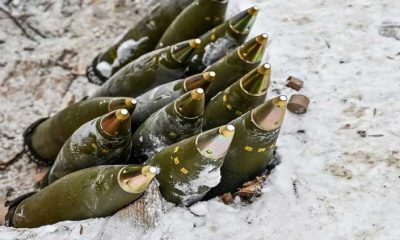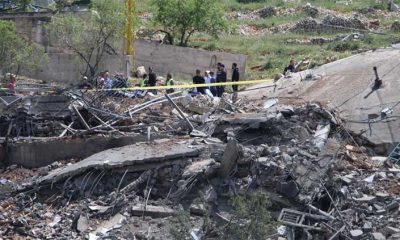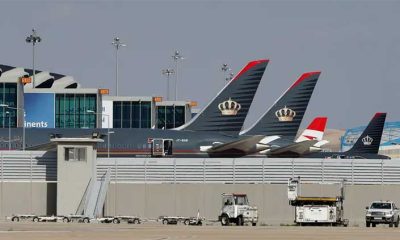A spokesman for Nepal’s Civil Aviation Authority says a flight data recorder and a cockpit voice recorder have been retrieved from the site of the crash of a passenger plane that went down on approach to a newly opened airport in the tourist town of Pokhara.
Jagannath Niraula said the boxes were found on Monday, a day after the ATR-72 aircraft crashed, killing 68 of the 72 people aboard. He said they will be handed over to investigators.
Pemba Sherpa, spokesperson for Yeti Airlines, also confirmed that both the flight data and the cockpit voice recorders have been found.
Nepal began a national day of mourning Monday, as rescue workers rappelled down a 300-meter (984 feet) gorge to continue the search. Two more bodies were found Monday morning.
It remains unclear what caused the crash, the Himalayan country’s deadliest airplane accident in three decades. The weather was mild and not windy on the day of the crash.
A witness who recorded footage of the plane’s descent from his balcony said he saw the plane flying low before it suddenly veered to its left. “I saw that and I was shocked… I thought that today everything will be finished here after it crashes, I will also be dead,” said Diwas Bohora. After it crashed, red flames erupted and the ground shook violently, like an earthquake, Bohora said. “I was scared. Seeing that scene, I was scared.”
Another witness said he saw the aircraft twist violently in the air after it began descending to land, watching from the terrace of his house. Finally, Gaurav Gurung said, the plane fell nose-first towards its left and crashed into the gorge.
Nepal’s Civil Aviation Authority said the aircraft last made contact with the airport from near Seti Gorge at 10:50 a.m. before crashing.
The twin-engine ATR 72 aircraft, operated by Nepal’s Yeti Airlines, was competing the 27-minute flight from the capital, Kathmandu, to Pokhara, 200 kilometers (125 miles) west. It was carrying 68 passengers, including 15 foreign nationals, as well as four crew members, Nepal’s Civil Aviation Authority said in a statement. The foreigners included five Indians, four Russians, two South Koreans, and one each from Ireland, Australia, Argentina and France.
Hundreds of people gathered outside the Pokhara Academy of Health and Science, Western Hospital, where the bodies are being kept. Relatives and friends of victims, many of whom were from Pokhara, consoled each other as they waited.
Bimala Bhenderi was waiting outside the post-mortem room Monday. She was planning to meet her friend, Tribhuban Paudel, on Tuesday when she heard that his flight had crashed. “I’m so sad, I can’t believe it still,” she said in tears.
Gyan Khadka, a police spokesperson in the district, said 31 bodies have been identified and will be handed over to family after officials finish post mortem reports. The bodies of foreigners and those that are unrecognizable will be sent to Kathmandu for further investigation.
On Sunday, Twitter was awash with images that showed plumes of smoke billowing from the crash site, about 1.6 kilometers (nearly a mile) away from Pokhara International Airport. The aircraft’s fuselage was split into multiple parts that were scattered down the gorge.
Hours after dark, scores of onlookers remained crowded around the crash site near the airport in the resort town of Pokhara as rescue workers combed the wreckage on the edge of the cliff and in the ravine below.
Local resident Bishnu Tiwari, who rushed to the crash site near the Seti River to help search for bodies, said the rescue efforts were hampered by thick smoke and a raging fire.
“The flames were so hot that we couldn’t go near the wreckage. I heard a man crying for help, but because of the flames and smoke we couldn’t help him,” Tiwari said.
At Tribhuvan International Airport in Kathmandu, family members appeared distraught as they waited for information.
Prime Minister Pushpa Kamal Dahal rushed to the airport after the crash and set up a panel to investigate the accident.
”The incident was tragic. The full force of the Nepali army, police has been deployed for rescue,” he said.
South Korea’s Foreign Ministry said in a statement that it’s still trying to confirm the fate of two South Korean passengers and has sent staff to the scene. The Russian Ambassador to Nepal, Alexei Novikov, confirmed the death of four Russian citizens who were on board the plane.
Omar Gutiérrez, governor of Argentina’s Neuquen province, wrote on his official Twitter account that an Argentine passenger on the flight was Jannet Palavecino, from his province.
The Facebook page of Palavecino says she was manager of the Hotel Suizo in Neuquen city. She described herself as a lover of travel and adventure tourism.
Australian Treasurer Jim Chalmers told reporters Monday that “our hearts go out to all of the families of the crew and passengers” who died, adding that the government was providing consular support to the family of an Australian who was aboard the plane.
Pokhara is the gateway to the Annapurna Circuit, a popular hiking trail in the Himalayas. The city’s new international airport began operations only two weeks ago.
The type of plane involved, the ATR 72, has been used by airlines around the world for short regional flights. Introduced in the late 1980s by a French and Italian partnership, the aircraft model has been involved in several deadly accidents over the years.
In Taiwan two earlier accidents involving ATR 72-500 and ATR 72-600 aircrafts happened just months apart.
In July 2014, a TransAsia ATR 72-500 flight crashed while trying to land on the scenic Penghu archipelago between Taiwan and China, killing 48 people onboard. An ATR 72-600 operated by the same Taiwanese airline crashed shortly after takeoff in Taipei in February 2015 after one of its engines failed and the second was shut down, apparently by mistake.
The 2015 crash, captured in dramatic footage that showed the plane striking a taxi as it hurtled out of control, killed 43, and prompted authorities to ground all Taiwanese-registered ATR 72s for some time. TransAsia ceased all flights in 2016 and later went out of business.
ATR identified the plane involved in Sunday’s crash as an ATR 72-500 in a tweet. According to plane tracking data from flightradar24.com, the aircraft was 15 years old and “equipped with an old transponder with unreliable data.” It was previously flown by India’s Kingfisher Airlines and Thailand’s Nok Air before Yeti took it over in 2019, according to records on Airfleets.net.
Yeti Airlines has a fleet of six ATR 72-500 planes, company spokesperson Sudarshan Bartaula said.
Nepal, home to eight of the world’s 14 highest mountains, including Mount Everest, has a history of air crashes. Sunday’s crash is Nepal’s deadliest since 1992, when all 167 people aboard a Pakistan International Airlines plane were killed when it plowed into a hill as it tried to land in Kathmandu.
According to the Flight Safety Foundation’s Aviation Safety database, there have been 42 fatal plane crashes in Nepal since 1946.
According to a 2019 safety report from Nepal’s Civil Aviation Authority, the country’s “hostile topography” and “diverse weather patterns” were the biggest dangers to flights in the country. The report said such accidents happened at airports that had short strips of runway for takeoff and landing and most were due to pilot error.
The report added that 37% of all air crashes in Nepal between 2009 and 2018 were due to pilot error, not counting helicopters and recreational flights.
The European Union has banned airlines from Nepal from flying into the 27-nation bloc since 2013, citing weak safety standards. In 2017, the International Civil Aviation Organization cited improvements in Nepal’s aviation sector, but the EU continues to demand administrative reforms.
Post Views: 84

 Fashion3 months ago
Fashion3 months ago
 Fashion3 months ago
Fashion3 months ago
 Sports3 months ago
Sports3 months ago
 Sports3 months ago
Sports3 months ago
 Sports2 months ago
Sports2 months ago
 Sports2 months ago
Sports2 months ago
 Fashion2 months ago
Fashion2 months ago























